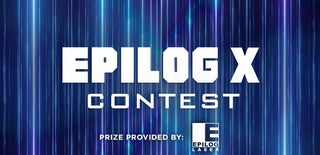Introduction: Laser Cut Tactile Memory Game
This Instructables describes how to design and make a custom laser cut tactile Memory game that can be played by all learners, regardless of vision. This project was created by the Build a Better Book Project, a STEM outreach program based at the University of Colorado Boulder that engages youth in Making to create more inclusive media (including books and games) for children who are blind or visually impaired. We designed this tactile Memory game in collaboration with several children who were blind, together with their families. They had requested more inclusive games that could be played together as a family, regardless of whether individuals were sighted, blind or low-vision.
We have tested two versions of the Tactile Memory game: one is a laser cut version in which shapes are laser engraved on wood tiles; the other is a hand-crafted version that features raised shapes (created with Wikki Stix) mounted on laser cut wood tiles. Both versions can easily be customized with specific shapes or themes.
The Build a Better Book Project is supported by the National Science Foundation (ITEST award #1615247).
Step 1: Designing Laser Cut Memory Cards
We used Adobe Illustrator to design laser cut Memory cards featuring an assortment of laser-engraved shapes, including basic shapes (e.g., circle, hexagon, heart) and common objects (e.g., flower, tree, sun). We downloaded icons from The Noun Project, an online collection of free-to-use icons. (The Noun Project offers both free and paid accounts; we opted for the paid NounPro account, which helps to streamline the connection to Adobe Illustrator.) We created cards that are 2" x 2" square with rounded corners.
In selecting appropriate images for tactile memory cards, it is important to select images that are clear, without a lot of unnecessary detail or clutter in the image. Icons that have a distinct shape and/or include essential features work well for this game.
Step 2: Creating Tactile Memory Cards on the Laser Cutter
We laser cut our Tactile Memory Cards on an Epilog Helix laser cutter. We created sets made of 1/8" plywood as well as 1/8" Taskboard. The plywood cards are a bit sturdier but also a bit rougher to touch; the Taskboard cards are lighter and a bit softer to touch. The attached files can be used to create your own set!
Step 3: Customizing Tactile Memory Game
The Tactile Memory game can easily be customized for a child's particular interests. Here, we created some additional music-themed cards, based on a family's request for a child who enjoyed music.
Step 4: Adding Braille
Tactile Memory cards can also be used to practice braille, especially for early braille learners and readers. If you plan to add braille labels to cards, be sure to leave ~ 1/3" blank below each image in order to have enough room for the label. We created braille labels by hand using a slate and stylus. For more detailed instructions on adding braille, please visit our online guidelines.
Step 5: Alternative: Memory Cards Crafted With Wikki Stix
An alternative to laser-engraved Memory cards is to create raised images using Wikki Stix (or other craft materials). We have found that Wikki Stix work very well because they are an excellent size, they're flexible to create a myriad of different shapes, and they're very sticky, which helps to mount them to the card.
First, we created a set of blank Memory cards (2" x 3") using 1/8" plywood, although cardboard, foam core or Taskboard could also be used. We have found that a set of 24 cards (or 12 pairs) works well for this game.
We then used Wikki Stix to make an assortment of designs and shapes on the Memory cards. This is a fun step that everyone can participate in, including young kids and family members who are blind or low vision. It's important to remember that the shapes should be distinct from each other so that they can be readily distinguished by touch, and that matching shapes should be the same size. Remember to create two cards with each shape!
Step 6: Set Cards With Mod Podge
As a final step, we used Mod Podge to secure the Wikki Stix to the cards. This also helps to reduce the stickiness of the cards. Once the cards are dry, it's time to play!
Step 7: Play!
The Tactile Memory game can be played with all learners, regardless of vision level. Simply take turns selecting and turning over two cards. If they match, the player collects the cards and takes another turn.
To even the playing field, sighted players may wish to play with their eyes closed or use a blindfold.

Participated in the
Epilog X Contest









